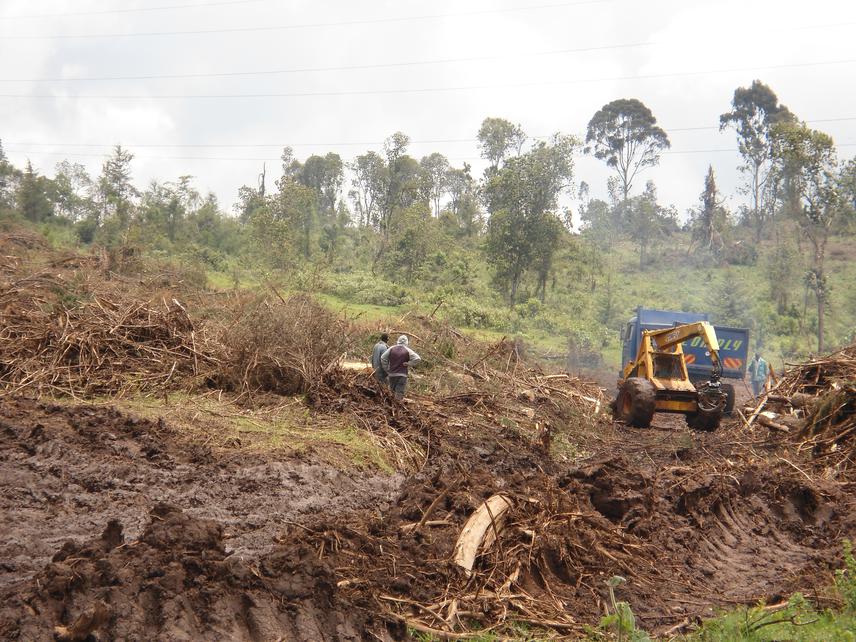Faith Milkah Ngugi - Muniale
Other projects
29 Sep 2008
Enhancing Community Participation in Lake Nakuru Catchment Environmental Conservation: A Case of River Njoro Watershed I
31 Aug 2011
Enhancing Community Participation in Lake Nakuru Catchment Environmental Conservation- A Case of River Njoro Wate IIrshed
To develop a forest management plan that will enable the local community (community forest association) and government of Kenya through Kenya Forest Service (KFS) to enter formal agreement on how to share responsibilities, roles and benefits for conserving the forest reserve.

Plantation timber harvet in the project area.
Participatory Forest Management (PFM) is an effective way of enhancing community participation in management of natural resources. The project will enable people who have direct stake on forest resources be part of decision making, therefore control conflict over access, use and conservation of natural resources. It will take a participatory approach to the process that entails assessing forest resources, issues and opportunities, social and economic status of the community; and proposing interventions to reduce pressure on forest, improve its condition, conserve biodiversity and improve the livelihoods of the community around the forest. The project will bring about recognition of local people’s rights which will potentially increase the commitment of local people to participate in conservation unlike the situation in the previous forest management regime that did not consider inclusion of local people in any level of decision making. The project will facilitate establishment of a mutual arrangement between the local communities and Kenya Forest Service (KFS). According to Forest Act 2005, this can only happen when the Forest Management Plan is prepared and Forest Management Agreement is then signed. There overall outcome of the project is sustainable use of forest resources. This is achieved through programmes that will be developed in the process to enhance conservation of biodiversity and their habitats. It will control illegal, unsustainable logging and harvesting of forest products that has been a major challenge in forest conservation in Kenya. The planned programmes at intervention zone or the area adjacent to the gazetted forest exactly where local people live will focus on activities that will generate most of the resources that make people invade the forest e.g. by establishing woodlots for firewood and fodder for livestock on their farms, to reduce pressure on the forest. It will also provide an opportunity to diversify local economies through activities like sustainable beekeeping and ecotourism.
PFM Plan development process will also raise awareness and change the paradigm of local people to understand that management of natural resources potentially will improve their livelihoods. It will also empower the Community Forest Association (CFA) who will be involved through the process and are the owners of the five year PFMP document that this project will produce.